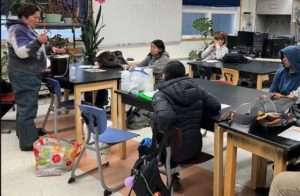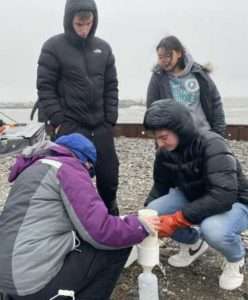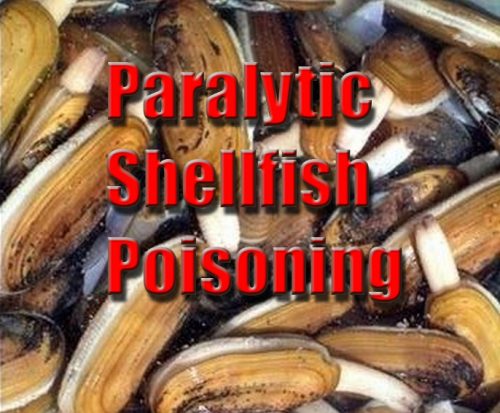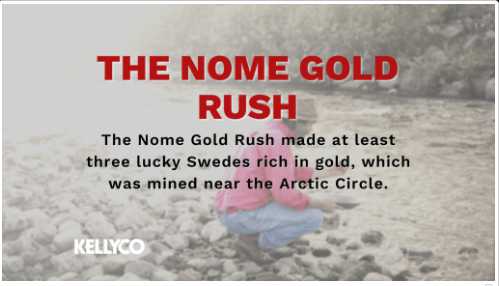
For three days in November, students from Nome-Beltz High School learned about ocean algae, especially about toxin producing species that cause paralytic shellfish poisoning (PSP) in humans and marine wildlife. Alaska Sea Grant and the Norton Sound Health Corporation (NSHC) Office of Environmental Health joined forces with the high school to bring the latest information on a harmful type of algae to these students.
The program started with a classroom session, followed by a field trip to visit the Port of Nome, where students learned and practiced seawater sampling techniques. From there, they brought these samples to the science lab at the University of Alaska Fairbanks Northwest Campus, where they learned how to identify the different types of tiny algae in the seawater that they collected. While most marine algae do not produce toxins, and all marine algae form the base of the marine food web, there are some types of algae that are harmful to people and wildlife.

Harmful Algal Bloom (HAB) events are a new emerging threat in the Arctic. During the summers of 2019 and 2022, high concentrations of algae called Alexandrium catenella were detected by researchers in the Bering Strait and Chukchi Sea. This species produces a toxin, called saxitoxin, that causes PSP in people and wildlife. When high levels of a toxic algal species grows quickly, as happened last summer, it is called a Harmful Algal Bloom (HAB) event.
Part of the high school student lessons included learning how subsistence seafoods, such as seals, tunicates, clams, and other marine resources, are sampled and analyzed for algal toxins that can accumulate and move through the food web. Alaska Sea Grant is working with NOAA Northwest Fisheries Science Center and Woods Hole Oceanographic Institution researchers on a 5-year ECOHAB project to look at tracking the algal toxin, saxitoxin, in the Arctic food web.
The NSHC Office of Environmental Health is setting up a region-wide long-term community seawater monitoring program to identify harmful algae, such as Alexandrium catenella, and to determine how much of it may be in the waters where communities conduct maritime subsistence activities.
The high school students learned about the emerging HAB issue, seawater and seafood sampling and testing, as well as a good lesson in working together to tackle new regional issues. Although a warming arctic is presenting new challenges and, yes, even dangers, it can also bring together regional partners to prepare the next generation of community members and state leaders to be a part of local solutions.
[content id=”79272″]




